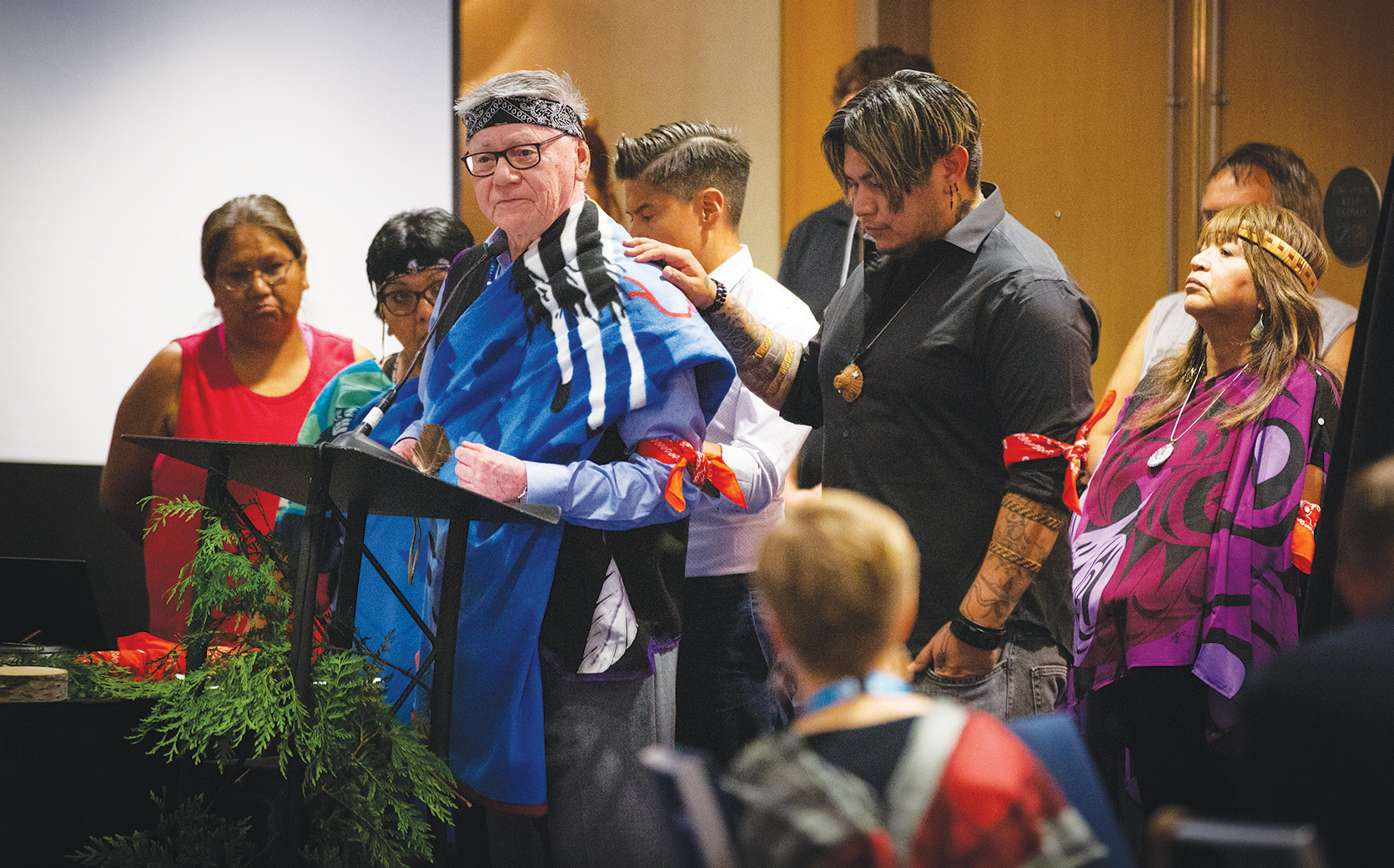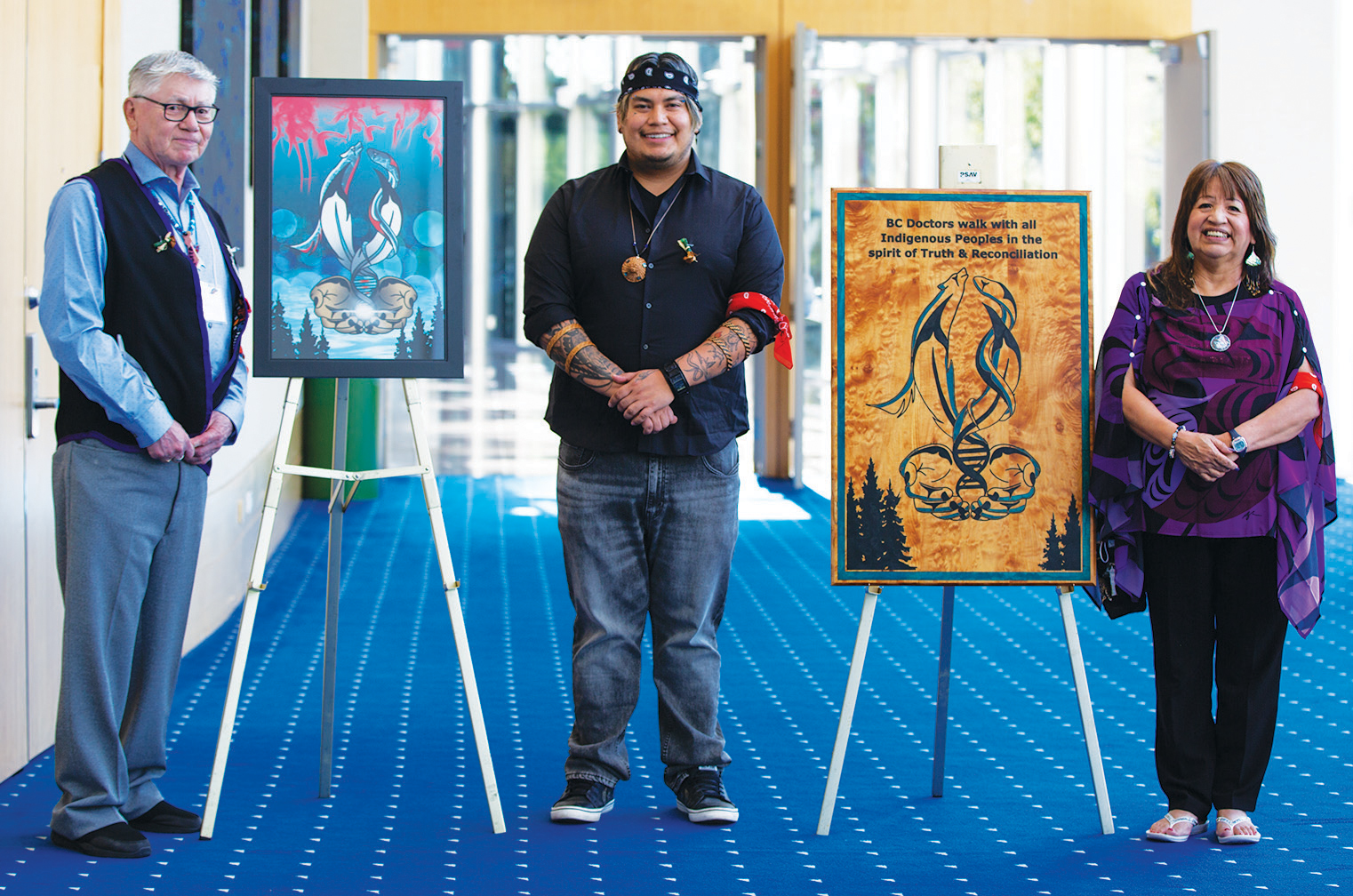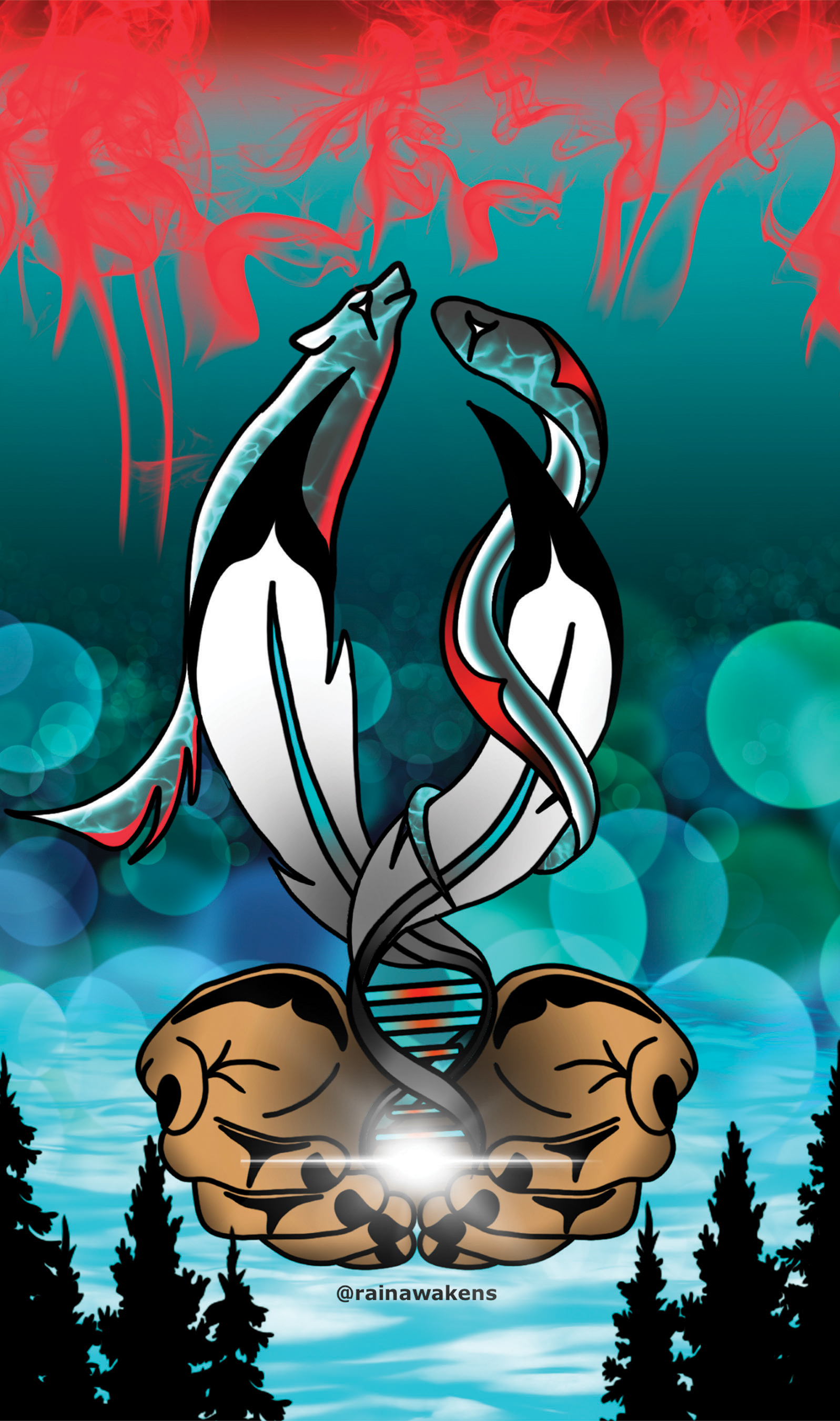Advancing Indigenous cultural safety and humility in health care
Transformative and lasting reconciliation with Indigenous peoples requires action from all health care professionals and providers in British Columbia. We are obliged to act on the deep injustices of colonialism and anti-Indigenous racism. The Joint Collaborative Committees (JCCs) have pledged to walk with First Nations, Métis, and Inuit peoples as we support the need to reframe how physicians and their teams deliver care for Indigenous people. We have opened our minds and hearts to recognize the negative impact that colonialism has had and continues to have on Indigenous communities, and how unsafe health care spaces have left many Indigenous patients fearful to seek medical assistance.
We acknowledge that, as physicians, we can shift our own biases and perspectives to become meaningful advocates for systemic change. We are compelled to fully appreciate the impact of culturally unsafe care and to formulate ways to create space in the health care system to better meet the needs of Indigenous patients. This work cannot be achieved without the insights of and partnership with Indigenous peoples.
Ensuring the medical profession’s efforts align with the United Nations Declaration on the Rights of Indigenous Peoples, the Truth and Reconciliation Commission, and the Government of British Columbia’s In Plain Sight report, we continue to ground our journey in meaningful relationships with Indigenous communities, Elders, and Knowledge Keepers; the BC Ministry of Health; the First Nations Health Authority; and BC’s other health authorities.
How are we getting there?
On 8 September 2022, the JCCs hosted a landmark and symbolic truth and reconciliation ceremony in Vancouver. The event was a landmark in that the JCCs invited and called witness physicians and other health care partners from across the province to participate. It was symbolic in purpose, as the JCCs acknowledged that the ceremony was both healing and medicinal. Guided by the wisdom of Elders and Indigenous leaders, we explored and learned about a much deeper history of Indigenous peoples and were guided on protocols and customs.
The ceremony culminated in the unveiling of a commissioned work of art by BC Indigenous artist sɬə́məxʷ Rain Pierre. The Light of Irene, named after Mr. Pierre’s late aunt, was created in collaboration with BC family and specialist physicians. The artwork will serve as a beacon of safety in health care to Indigenous patients and to those who provide their health care. It is an invitation to inspire meaningful health care conversations and to build trust. Various elements and symbols embedded in the art provide deep intentional meaning; one such example is the wolf, who belongs to a pack, as health care is best delivered by collaborative teams.
Attendees and witnesses of the ceremony were guided on their own healing journeys through drumming and song from the Xwelmexw Shxwexwo:s (Salish Thunderbird). We also heard from Elder Tey-U-Tun Cyril Pierre as he shared his deeply emotional experience as a residential school survivor. His truth was a raw and determined call to the medical profession to do its part in reconciliation with Indigenous peoples.
This autumn, the first string of longhouse sessions were hosted and facilitated by Len Pierre Consulting, providing an opportunity for physicians to engage with local First Nations communities to learn more about Indigenous culture and protocols, and to connect with Indigenous health care providers.
A series of Indigenous-led cultural safety webinars will be facilitated by Harley Eagle, Indigenous facilitator and consultant, this winter.
The JCCs have partnered with Indigenous leaders Team Atleo to deliver the Compassionate Leadership program and curriculum to physicians, health care teams, and partners across BC.
It is through Doctors of BC and the JCCs’ continued partnerships with Indigenous communities that we are able to make an impact and a meaningful difference in the lives of Indigenous patients. Creating safe spaces, understanding cultural protocols, and using trauma-informed care are just a few ways for us to make a lasting difference.
A copy of Mr Pierre’s artwork is now available to every doctor, medical practice, and medical workplace in BC. Its representation is to be a visible symbol of belonging and safety and our deep commitment to truth and reconciliation. Displaying this artwork prominently in your practice and workplace is one way of demonstrating that you are open and committed to the provision of culturally safe and appropriate health care for your Indigenous patients.
To request a free copy of the artwork for your practice or office, please complete this online form: https://doctorsofbc.jotform.com/phiggins/tandsposter.
—Alan Ruddiman, MD
Emcee, JCC Truth and Reconciliation Ceremony
Co-chair, Joint Standing Committee on Rural Issues

Elder Tey-U-Tun Cyril Pierre shares his deeply emotional experience as a residential school survivor.

BC Indigenous artist sɬə́məxʷ Rain Pierre stands with the artwork The Light of Irene and his parents.

Mr Rain Pierre, Indigenous artist; Dr Ramneek Dosanjh, president, Doctors of BC; and Dr Alan Ruddiman, co‑chair, Joint Collaborative Committees, participate in an honorary blanket ceremony for the work they have accomplished in advancing cultural safety in health care.

The Light of Irene by Rain Pierre. This artwork, named after Mr Pierre’s late aunt, was created in collaboration with BC family and specialist physicians.
hidden
This article is the opinion of the Joint Collaborative Committees (JCCs) and has not been peer reviewed by the BCMJ Editorial Board.
 |
| This work is licensed under a Creative Commons Attribution-NonCommercial-NoDerivatives 4.0 International License. |

